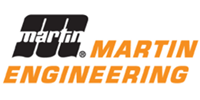   |
Preface
This report was derived through a number of methods including web research, phone calls and emails. A market segment was selected to gain a better perspective on competitive viewpoints. A broader based approach would have alerted the participants to the nature of the inquiry. This is not an in-depth report but rather a “snapshot” of the “market landscape”. Market Overview The U.S. coal mining industry includes about 1,000 companies that operate 1,500 mines, with a combined annual revenue of $25 billion. Although few new coal-fired plants have been built in recent years, a combination of factors has driven power plant owners to upgrade their coal handling facilities. Older conveyors and equipment, for example, have been rehabilitated to become more efficient. But of equal or greater significance has been the need to upgrade and modify coal-handling capabilities to accommodate fuel switches or blending schemes. Such switching and/or blending are commonly required to meet new environmental demands, and sometimes to lower operating costs. Recent coal yard upgrades have also been initiated by changes in the way coal shipments are received or by the need for additional coal receiving modes. And while each plant that has rehabilitated its coal handling facilities did so based on a unique set of plant-specific conditions, many conditions are common among all plants. A common driver behind modifications at coal-fired power plants has been the need to handle alternate types of coal due to fuel switching or blending. These conveyor modifications include increased capacity requirements requiring higher drive horsepower. Many plants have also modified and upgraded their reclaim coal handling system—all the way to the plant bunkers or silos—to accommodate fuel switching or blending. The reclaim, crushing, and plant supply system modifications have included increasing conveyor and equipment capacities to handle the increased use of PRB without increasing bunker or silo fill times. Conveyor modifications have included higher belt speeds, increased troughing idler angle, and/or increased belt widths. Most modifications have required increased conveyor drive horsepower. Preliminary Market Findings A number of interviews have been conducted over the last three days. Among the trends that were noticed is the “partnering” within the industry to better serve customers. Ed Springs, a sales representative from General Kinematics who manufactures what he terms “brute force” machines, utilizes Martin vibratory motors within the General Kinematics design. Springs elaborated, “Martin produces an excellent motor which we use in our designs.” Martin Engineering’s product depth can be found throughout the market. ASGCO is a strong player within this market. Company President Aaron Gibbs proclaimed, “We have proven ourselves at many coal mines and coal fired power plants that our products are superior to Martin’s.” The ASGCO sales channels are comprised of distributors for manufactured products, such as conveyor accessories and sales representatives for engineered products. According to Gibbs, they would like to build up the off shore sales force by alliance. Epperson and Company is a leading supplier of Bulk Material Conveying products and services in the Southeast. They are headquartered in Tampa with full service locations in Jacksonville and Miami. They are a distributor for ASGCO, Flexco and Martin Engineering. When contacted via the Flexco website, an email was received that indicated the inquiry was sent to Epperson. However, 48 hours went by without any type of contact—despite the fact a full inquiry form was filled-out. A call was placed, and an inside sales representative, Charlotte White, provided information. She said they are a stocking distributor for Flexco, which indicates they are heavily involved in the material handling business to stock products, and may be offered preferred pricing from Flexco. They do order from both Martin Engineering and ASGCO. She indicated that, at one point, it was believed they were a stocking distributor for Martin Engineering. White went on to say that they were encouraged by the new approach from Flexco, as well as the plans for more online marketing programs that linked the Epperson site with Flexco. |
